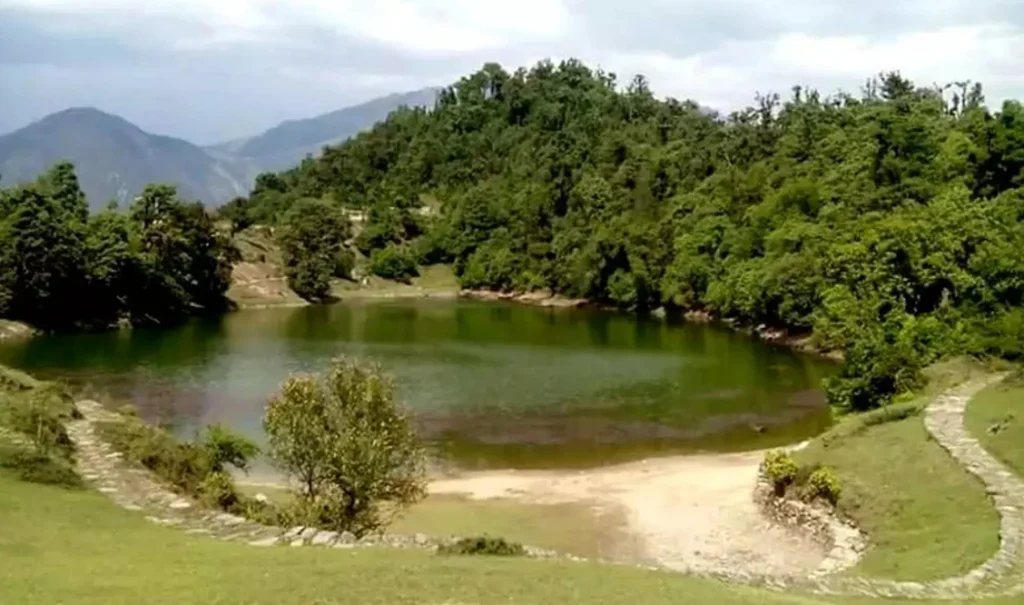Discover Deoria District, a land rich in heritage, culture, and agriculture. Explore its ancient temples, historical landmarks, and fertile landscapes in Uttar Pradesh.

Explore Deoria: Temples, History & Fertile Landscapes
Nestled in the northern part of India’s populous state of Uttar Pradesh, Deoria District stands as a testament to the rural essence and cultural vibrancy of the region. Spread over an area of approximately 2,536 square kilometers, this district is not just a geographical expanse, but a tapestry woven with historical significance, natural beauty, and the resilience of its people.
History:
Deoria’s history can be traced back to ancient times, with references in the great Indian epics like the Mahabharata. Over the centuries, it witnessed the rise and fall of several dynasties, contributing to its cultural amalgamation. The district was formally established in 1946, making it one of the relatively younger administrative entities in the country.
Geography:
The landscape of Deoria District is predominantly characterized by fertile plains intermingled with rivers, providing the ideal conditions for agricultural activities. The Ghaghara River forms its northern boundary, adding to the district’s agricultural fertility and scenic beauty. The lush fields and meandering water bodies offer a picturesque view of rural India.
Economy:
Agriculture is the backbone of Deoria’s economy, with the majority of its population engaged in farming. Crops like rice, sugarcane, wheat, and pulses flourish in this fertile land. The district has also made strides in agro-based industries, contributing to local employment and economic growth. In recent years, efforts to diversify the economy have led to the growth of small-scale industries and trade activities.
Culture and Heritage:
Deoria District is a treasure trove of cultural heritage. Folk music and dance are an integral part of the local lifestyle, celebrating festivals and auspicious occasions with exuberance. The district is also known for its traditional crafts like pottery, weaving, and wood carving, showcasing the skills passed down through generations.
Tourism:
While Deoria is predominantly rural, it offers a unique charm for travelers seeking an authentic rural experience. The district is dotted with temples and religious sites that hold historical and spiritual significance. The Deoraha Baba Temple, dedicated to Lord Shiva, is a prominent pilgrimage spot. The lush landscapes, tranquil lakes, and Ghaghara River offer opportunities for nature enthusiasts to indulge in serene moments.
Challenges and Opportunities:
Despite its rich cultural heritage and agricultural prominence, Deoria District faces various challenges. Limited access to quality healthcare and education remains a concern. Infrastructure development, particularly in terms of road connectivity, is a priority for enhancing the region’s overall growth. Leveraging the potential of agro-tourism could also provide a boost to the local economy.
Famous Places in Deoria District
Deoria District is home to several famous places that showcase its cultural heritage and natural beauty. Some notable attractions include:
Deoraha Baba Temple: A significant religious site dedicated to Lord Shiva, this temple draws pilgrims and tourists alike. The serene surroundings and spiritual atmosphere make it a must-visit spot.
Sita Samahit Sthal: This religious site holds importance in Hindu mythology, as it is believed to be the place where Goddess Sita entered the earth. The temple complex and the nearby pond attract devotees seeking blessings.
Tarkulha Devi Temple: Situated on the banks of the Tarkulha Lake, this temple is dedicated to Goddess Durga. The picturesque location and the annual fair during Navratri make it a popular destination.
Salempur Mahadev Mandir: Another notable Shiva temple, this site hosts a vibrant fair on the occasion of Maha Shivaratri. The temple’s intricate architecture and religious significance make it a cultural landmark.
Ram Janki Temple, Rampur Karkhana: This temple is dedicated to Goddess Sita and Lord Ram and is known for its intricate carvings and spiritual ambiance. The annual Ram Navami festival sees devotees from far and wide.
Barahi Devi Temple: Nestled in the Ghaghara River basin, this temple attracts visitors with its tranquil surroundings. The temple is dedicated to Goddess Barahi and offers panoramic views of the surrounding landscape.
Ghaghara River: The majestic Ghaghara River flows along the northern boundary of the district. Its serene banks and the Ghaghara Ghats provide a perfect backdrop for nature lovers and photographers.
Lal Bihari Temple, Rudrapur: This temple holds historical and spiritual significance and attracts pilgrims seeking blessings from Lord Krishna. The temple’s architecture and peaceful setting are noteworthy.
Rudrapur Market: For a taste of local life, a visit to Rudrapur’s bustling market is a must. From traditional crafts to local produce, it’s a great place to experience the district’s cultural and economic diversity.
Tarkulha Lake: This scenic lake offers boating opportunities and is a popular spot for picnics. The serene environment and picturesque surroundings make it a perfect place to unwind.
These are just a few of the many attractions that Deoria District has to offer. Whether you’re interested in spirituality, history, or natural beauty, the district provides a diverse range of experiences that showcase its unique charm.
Read More :-